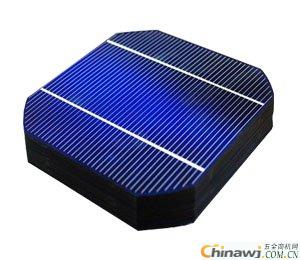The bottoming out of polysilicon prices is not unfounded. At the end of December 2012, polysilicon prices bottomed out at 115.125 million yuan/ton. At the beginning of January 2013, the prices of various types of polysilicon photovoltaic products began to rebound and rebound. Among them, single crystal products rebounded first, followed by Within a few weeks, the price increase of the whole industry chain has expanded, and the prices of silicon wafers, battery chips and components have risen in an all-round way. There are several reasons for the increase in its price:
1. Due to the recent domestic polysilicon double-reaction and the active reduction of some downstream enterprises, the supply chain of products in the whole industry chain has begun to appear, coupled with the recent strong demand in Japan and China, the price rise is reasonable.
2. Double anti-expectation and supply and demand reversal are the driving factors. In terms of supply and demand, demand has continued to pick up in the near future, while polysilicon producers continue to be in a state of production shutdown and supply shortages in the short term, providing an opportunity for price recovery. The increase in shipments of downstream PV modules is mainly due to the rebound in demand, but the problem of overcapacity has not been effectively resolved.
To this end, the State Council executive meeting to accelerate the structural adjustment and technological progress of the photovoltaic industry, proposed to encourage mergers and acquisitions, and eliminate backward production capacity. On January 7 this year, the 2013 National Energy Work Conference proposed that this year will vigorously develop distributed photovoltaic power generation, with an annual installed capacity of 10 million kilowatts of photovoltaic power generation. These initiatives will bring hope to the photovoltaic industry, and industry mergers and acquisitions will accelerate. It is expected that more than one-third or even one-half of the enterprises will be merged and restructured. If the major companies in the future integrate and merge, they will actively reduce and close some of the production capacity, thereby promoting the price increase of polysilicon photovoltaic products.
3. In the first quarter of this year, China issued anti-dumping investigations against US and Korean polysilicon companies, and imposed anti-dumping duties of 30% to 50% or higher. The production costs of some manufacturers will increase, which will cause related operators to start. Preventive purchases have made the price of polysilicon more gradual.
4. In the Spring Festival holiday, in order to meet the urgent orders in the world, some domestic solar photovoltaic manufacturing enterprises are still starting construction, and the price of the products has been raised.
2. US assault exports and polysilicon imports remain high
According to the latest customs statistics, China's polysilicon imports in January 2013 was 6,791 tons, a slight increase from the previous month, up 12% year-on-year; in terms of import unit price, the average price of polysilicon imports in January hit a record low, dropping sharply to 18.47 US dollars / kg The chain decreased by 11.58%, down 41.5% year-on-year, which was 27.17% lower than the average price in 2012.
According to the country-specific import data in January, South Korea, the United States and Germany are the three largest importing countries, with imports from South Korea, the United States and Germany accounting for 89.9% of the total imports. Among them, the import volume from South Korea was 1062 tons, accounting for 15.6% of the total imports; the import volume from the United States was 3627 tons, accounting for 53.4% ​​of the total imports; the German import volume was 1414 tons, accounting for 20.8% of the total imports; other regions The import volume was 688 tons, accounting for only 10.1% of the total.
From the import prices of the three major importing countries: in January 2013, the import unit prices of Germany and the United States fell to different degrees from December 2012, respectively, at $24.99/kg and $14.70/kg, while the unit price of South Korea rebounded to 19.79. In US dollars/kg, the unit price of polysilicon imported from the United States remained the lowest among the three countries in January 2013 and hit a record low.

10M Measuring Tape,Large Tape Measure,Longest Tape Measure,Black Tape Measure
SHANGQIU CHAOYUE MEASURING TOOLS CO., LTD , https://www.equipmentool.com